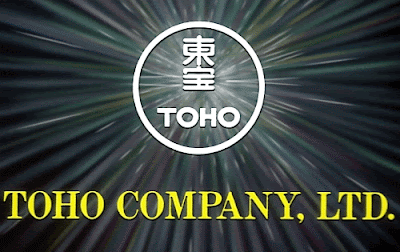
"Monsters are born too tall, too strong, too heavy—that is their tragedy,"
Ishirō Honda (7 May 1911 - 28 February 1993) was a Japanese film director who is best known for his kaiju and tokusatsu films, including several of the Godzilla films. He also worked extensively in the documentary and war genres earlier in his career.

It was at Toho where Honda assisted director Kajirô Yamamoto and befriended the legendary Akira Kurosawa. It was also at Toho that Honda met his future wife, script girl Kimi Yamazaki, to whom he would be married for more than fifty years.
Once again Honda served in the military as a platoon leader sergeant charged with hunting down Chinese insurgents. He then spent six months as a prisoner of war and was repatriated in 1946. It was at this time that he saw the devastation that the atom bomb had caused to the city of Hiroshima.


In 1949, Honda assisted Akira Kurosawa on Stray Dog, scouting locations and directing the second unit. In 1951 he directed his first theatrical directorial film titled, “The Blue Pearl.” Of significance to the subject matter of this blog, Honda's 1954 film, Gojira / Godzilla would have a profound and lasting impact on science fiction cinema.
Toho's production of Gojira was prompted and inspired by the stories that emerged concerning the after-effects of atomic radiation from the atomic bombs that were dropped on Hiroshima and Nagasaki in 1945, as well as the atomic testing at Bikini Atoll in 1954. The film was also inspired by the 1933 classic, King Kong which was re-released in 1952 as well as The Beast from 20,000 Fathoms in 1953.

Gojira would be the most expensive motion picture produced in Japan at that time, The film reflected aspects of Japan’s national and collective psyche by delving into issues of responsibility and guilt and calling into question Japan’s militaristic traditions.


Honda went on to direct many other science fiction films such King Kong vs. Godzilla (1962); Mothra vs. Godzilla (1964); Destroy All Monsters (1968); as well as tokusatsu films such as Rodan (1956), Mothra (1961) and The War of the Gargantuas (1966). His last feature film was Terror of Mechagodzilla (1975).
After retiring as a director, Honda worked with Kurosawa during the 1980s and '90s. as a directorial advisor, production coordinator and creative consultant on his last five films.

Nominations have included:
Academy Award for Best Foreign Language Film
Japan Academy Prize for Picture of the Year

©Chris Christopoulos 2015






Ishirō Honda Filmography
A Story of a Co-Op (1949)
|
Ise Island (1950)
|
The Blue Pearl (1951)
|
The Skin of the South (1952)
|
The Man Who Came to Port (1952)
|
Adolescence Part II (1953)
|
Eagle of the Pacific (1953)
|
Farewell Rabaul (1954)
|
Godzilla (1954)
|
Love Makeup (1955)
|
Cry-Baby (1955)
|
Half Human (1955)
|
Night School (1956)
|
Godzilla, King of the Monsters (1956)
|
People of Tokyo, Goodbye (1956)
|
Rodan (1956)
|
Young Tree (1956)
|
A Teapicker's Song of Goodbye (1957)
|
A Farewell to the Woman Called My Sister
(1957)
|
A Rainbow Plays in My Heart (1957)
|
Be Happy, These Two Lovers (1957)
|
The Mysterians (1957)
|
Song for a Bride (1958)
|
The H-Man (1958)
|
Varan the Unbelievable (1958)
|
Battle in Outer Space (1959)
|
The Human Vapor (1960)
|
Mothra (1961)
|
Gorath (1962)
|
King Kong vs. Godzilla (1962)
|
Matango (1963)
|
Atragon (1963)
|
Mothra vs. Godzilla (1964)
|
Dogora, the Space Monster (1964)
|
Ghidorah, the Three-Headed Monster (1964)
|
Frankenstein vs. Baragon (1965)
|
Invasion of Astro-Monster (1965)
|
The War of the Gargantuas (1966)
|
King Kong Escapes (1967)
|
Destroy All Monsters (1968)
|
All Monsters Attack (1969)
|
Latitude Zero (1969)
|
Space Amoeba (1970)
|
Terror of Mechagodzilla (1975)
|
Academy Award for Best Foreign Language Film
Japan Academy Prize for Picture of the Year


No comments:
Post a Comment